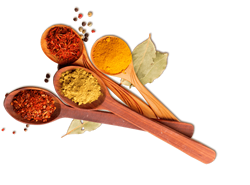
Welcome to Bombay Palace Indian Restaurant Wanaka
Learn moreWe create a melting pot of Indian Cuisine, with the fantastic spices, full flavored curries and Kebabs & Breads that melt in your mouth
Bombay originally was made up of seven islands of lush, fertile land. The earliest inhabitants were the Kolis or sherfolk, which named the islands as Mumbai after a patron deity Mumba Devi. The sultan of Gujarat acquired much of these lands by the 14th Century but it fell to the Portuguese in 1534. The Portuguese later gave MumbaDevi (Bombay) to England as part of a dowry upon the marriage of Catherine of Braganza to Charles II. By the middle of the 17th Century, England held control over the seven islands. Not until the 18th Century following land reclamation were the seven islands joined together again.
Bombay derives its unique character from its varied heritage and is still considered a patchwork quilt of Indian culture and faith. Modern Bombay or Mumbai, the nancial and commercial nucleus of India has always been a magnet city attracting the young & elderly, scholars, engineers, artists and entrepreneurs, administrators and the actors from across the length and breadth of the vast and magni cent country of India. Everyone of them in search of fame and fortunes, with their talent, skills and tradition have lent Bombay it’s unparalleled character. With it’s Islamic-Gothic architecture surrounded by modern day Skyscrapers, with temples and mosques, synagogues and churches standing beside ve star hotels & discotheques.
Here at Bombay palace, We have aspired to bring to your table a menu that re ects the cosmopolitan culture & culinary specialities of Bombay, the gateway to India.

